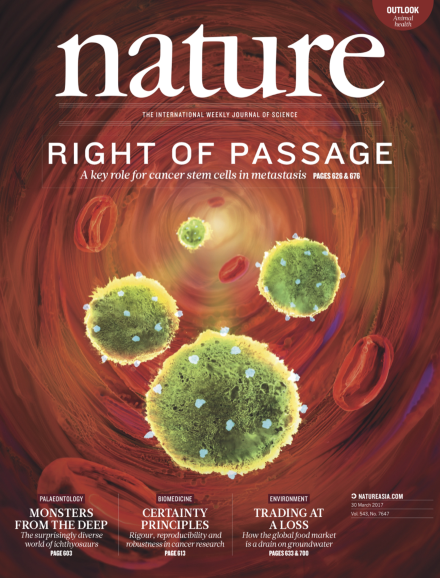Volume 543 Issue 7647, 30 March 2017
Editorial
World View
Research Highlights
Seven Days
News
News Feature
Comment
Books & Arts
Correspondence
Obituary
News & Views
Review Article
Article
Letter
Erratum
Corrigendum
Technology Feature
-
Cancer: Imaging with antibodies
Collection:
Feature
Career Brief
Futures
Outlook
-
Animal health
Nature Outlook:
-
Pets: Millennia together
Nature Outlook:
-
Environment: Hothouse of disease
Nature Outlook:
-
Perspective: The one-health way
Nature Outlook:
-
Microbiome: Puppy power
Nature Outlook:
-
Dogs: The riddle of resistance
Nature Outlook:
-
Parasites: Kitty carriers
Nature Outlook:
-
Climate change: As the ice melts
Nature Outlook:
-
Ebola: The great ape gamble
Nature Outlook:

